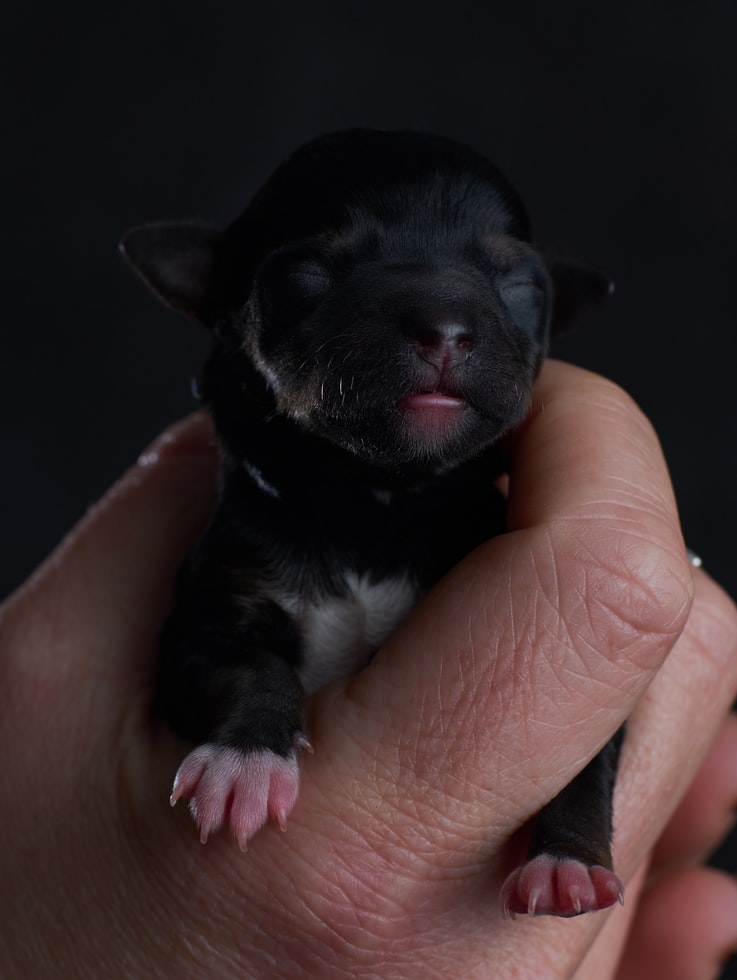Puppy care may appear to be an exciting profession since nothing is prettier or cuddlier than a puppy. The good news is that practically every mother dog knows how to do her job. Your primary responsibility is to look after her. Unless you’re the mama dog, that is.

Birth Care
Momma begins grooming her puppies as soon as they are born, washing them and cutting their cords. Each pup is born with its placenta in an amniotic sac. Momma breaks the sac, cleans the puppy’s face so he can breathe, chops through the cord, and swallows the placenta after it stops beating. She licks her puppies all over to excite them and get them interested in feeding, as well as assisting them with latching on to her nipples. They should settle themselves into a cozy, nursing puppy-and-momma pile after they’re all out.
Newborn Care
Newborn puppies are fully reliant on their mother. She provides milk, warmth, and even the capacity to eliminate. Momma kisses their stomachs and “diaper regions” to help them go pee, then cleans them afterward (we think it’s horrible, but it’s natural). The pups are virtually always nursing and sleep the rest of the time. For the first 10 days, puppies should be curled up with their mother, brothers, and sisters at all times. Their eyes will open after that, and they will crawl small distances.
Caring for Momma
Your responsibility is to keep your dog warm, safe, well-fed, and comfortable so she can do her job. She needs a whelping formula (a special diet for pregnant or nursing dogs) or high-quality puppy food. Ensure that she has access to clean, fresh water at all times.
Maintain a warm, draft-free, dimly light environment for Momma. Allow her to deliver and feed in a safe, secure environment — use a whelping box or allow her to select a location where she feels comfortable, but keep in mind that birth is messy. To create her nest, she’ll need plain newspaper, towels, or blankets that you’re prepared to toss away. Prepare to clean up messes for a couple of weeks if your dog won’t leave the pups long enough to “do her business.”
Health Check-up
Have mama and the litter checked by a veterinarian within the first two days? The best option is a house call. You should also check on mum and the pups daily. The initial indicators of eclampsia, typically deadly, are stiff mobility and discomfort. Swelling, blood, persistent grunting, squatting and agony, or a foul stench are not typical in the mother’s private regions. Swollen, red, hard, and painful breasts indicate mastitis, a serious threat to moms and puppies needing immediate medical intervention. If you observe any of these signs, contact your veterinarian right once.
Even though they adore you, some dogs are highly protective of their puppies. Consult your veterinarian. Leave the puppies alone for the time being if your dog scares you when you approach her.

Orphans and Others
It’s extremely rare for a mother dog to abandon or reject her pups. Still, suppose you have a puppy or a litter without a mother. In that case, you’ll need to do everything she would do: nourish at least every two hours with special doggie formula as well as puppy-size nipples, stimulate excretion with a warm, wet washcloth or paintbrush, and keep the temperature constant.
Check on the puppies throughout the day and night to make sure they’re all feeding and cuddled together with mom. A puppy who is alone from the rest of the pack is in critical need of your assistance. Consult your veterinarian if you need to care for an orphaned or rejected puppy.
Let us know in the comments how do you help your newborns?
